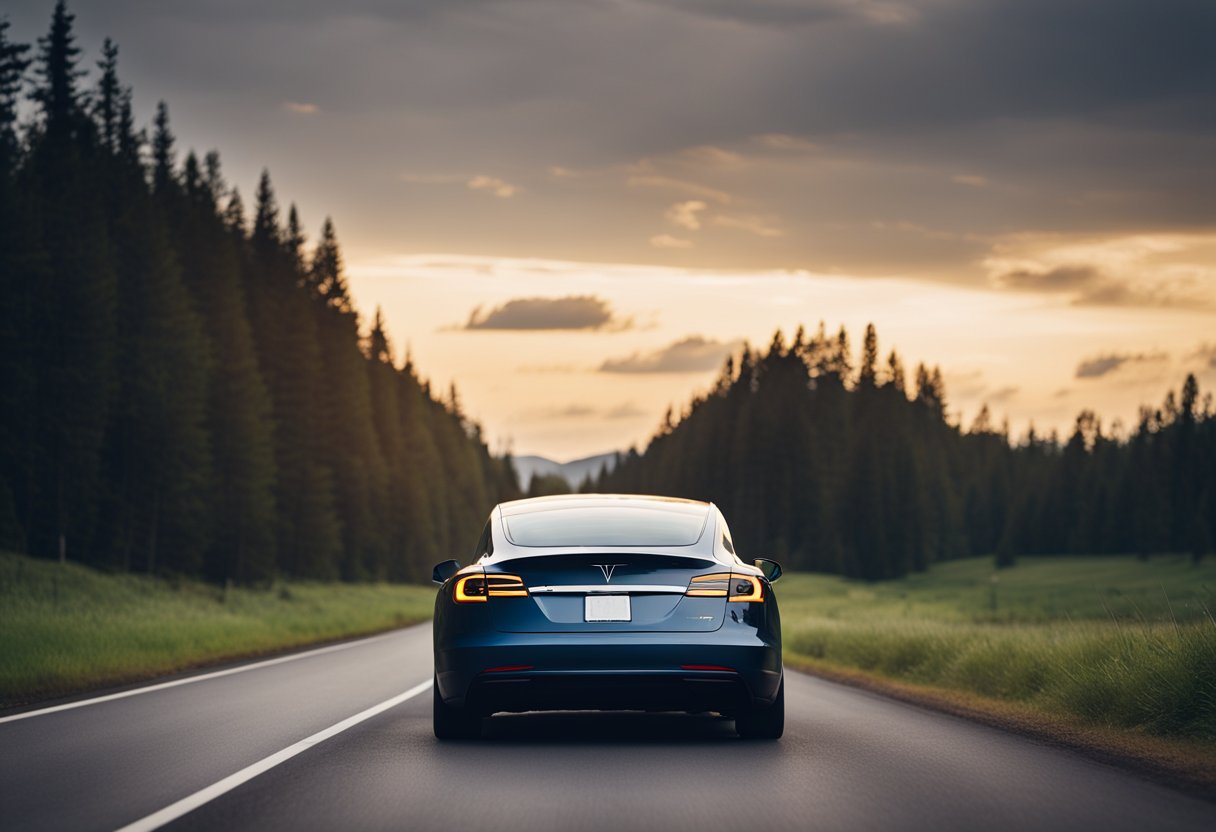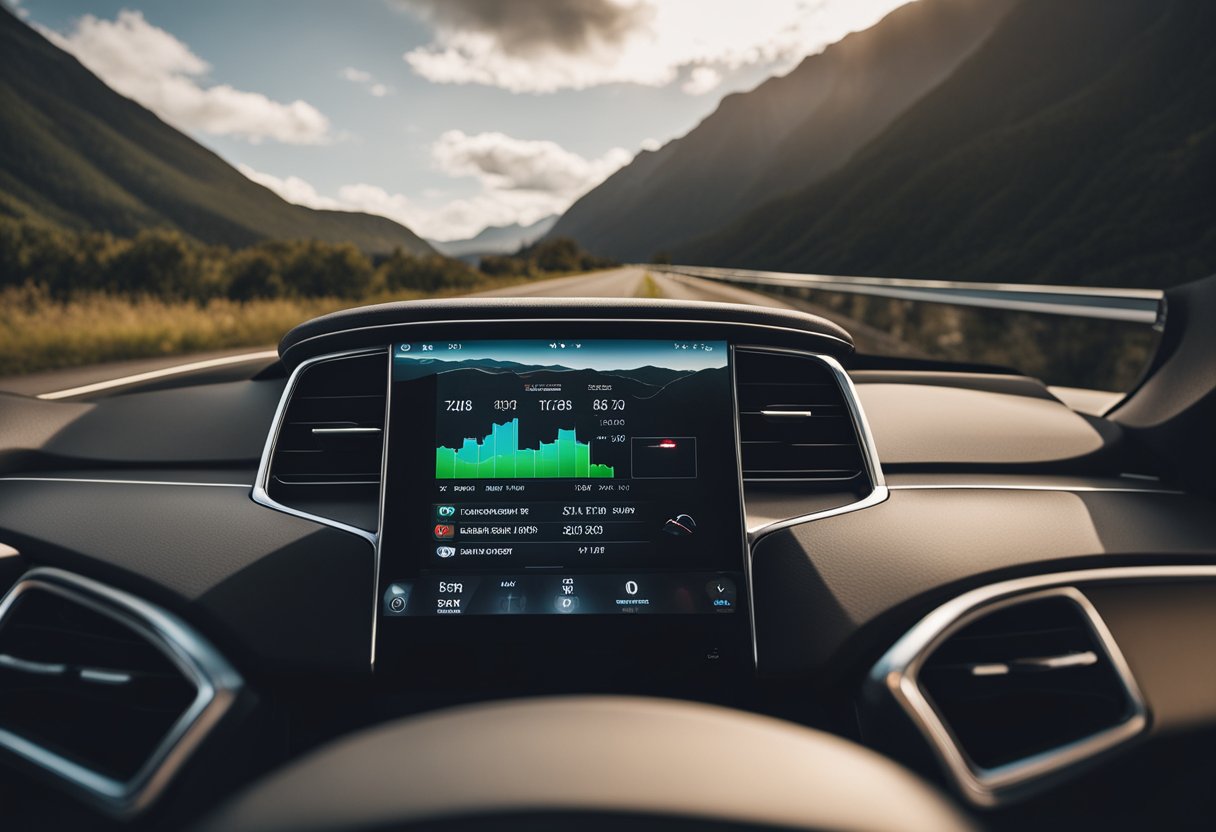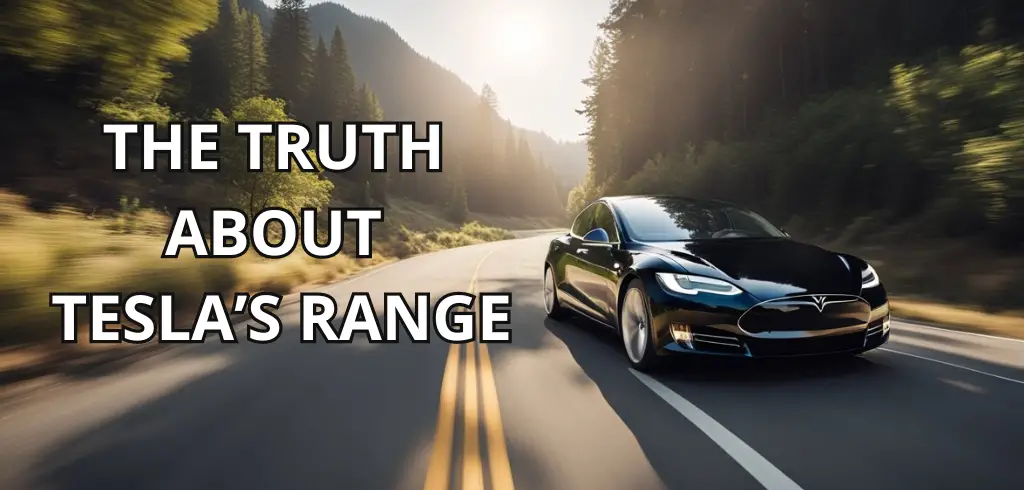If you’re considering purchasing a Tesla, one of the most important factors to consider is the car’s range. Tesla’s range estimates are often higher than those of other electric vehicles, but how accurate are they really? In this article, we’ll take a closer look at how Tesla calculates range estimates, what factors can affect the accuracy of those estimates, and how Tesla’s range compares to other electric vehicles on the market.
 Tesla’s range estimation system takes into account a variety of factors, including the car’s battery capacity, driving style, and environmental conditions. The system uses real-time data from the car’s sensors and GPS to make adjustments to the estimated range as you drive. However, there are some limitations to the system, and the accuracy of the range estimate can vary depending on a number of factors.
Tesla’s range estimation system takes into account a variety of factors, including the car’s battery capacity, driving style, and environmental conditions. The system uses real-time data from the car’s sensors and GPS to make adjustments to the estimated range as you drive. However, there are some limitations to the system, and the accuracy of the range estimate can vary depending on a number of factors.
There are several factors that can affect the accuracy of Tesla’s range estimates. For example, driving at high speeds or in extreme temperatures can reduce the car’s range. In addition, using features like air conditioning or heated seats can also have an impact on the car’s range. It’s important to keep these factors in mind when planning a long trip in your Tesla.
Table of Contents
Key Takeaways
- Tesla’s range estimation system takes into account a variety of factors, but the accuracy of the estimate can vary depending on driving style and environmental conditions.
- Driving at high speeds, extreme temperatures, and use of air conditioning or heated seats can all impact the car’s range.
- Tesla’s range estimates are often higher than those of other electric vehicles, but real-world range tests have shown that the estimates are generally accurate.
Understanding Tesla’s Range Estimation
When it comes to electric vehicles, one of the most important factors for drivers is the estimated driving range. Tesla has been known for its impressive range, but how accurate is its range prediction? In this section, we’ll explore the role of algorithms and the importance of vehicle-specific energy consumption in Tesla’s range estimation.
Role of Algorithms
Tesla uses complex algorithms to estimate the range of its vehicles. These algorithms take into account a variety of factors such as speed, temperature, terrain, and driving style. The algorithms use data from the vehicle’s sensors and historical driving data to make predictions about how much energy will be needed to complete a trip.
One of the unique features of Tesla’s algorithms is that they are constantly learning and adapting. As drivers use their vehicles, the algorithms gather data about driving habits and adjust their predictions accordingly. This means that the range estimation will become more accurate over time as the algorithms learn more about the driver’s behavior.
Importance of Vehicle-Specific Energy Consumption
Another important factor in Tesla’s range estimation is vehicle-specific energy consumption. Each Tesla model has a different energy consumption rate, which is affected by factors such as weight, aerodynamics, and tire type. Tesla takes these factors into account when estimating the vehicle’s range.
In addition to the vehicle-specific factors, Tesla also considers external factors such as temperature and terrain when estimating range. For example, driving in cold weather can reduce the range of an electric vehicle due to the increased energy required to heat the cabin. Tesla’s algorithms take this into account when estimating range.
Overall, Tesla’s range estimation is a complex process that takes into account a wide range of factors. While it may not always be 100% accurate, Tesla’s algorithms are constantly learning and adapting to provide the most accurate range estimation possible.
Factors Affecting Tesla’s Range
If you own a Tesla, you may have noticed that the estimated range displayed on your dashboard can vary depending on several factors. In this section, we’ll explore some of the key factors that can impact your Tesla’s range.
Impact of Driving Conditions
Driving conditions can play a significant role in determining your Tesla’s range. Factors such as traffic speed, wind speed, and elevation/grade can all impact how far you can travel on a single charge. For example, if you’re driving on a steep uphill grade, your Tesla will consume more energy than it would on a flat road, resulting in a shorter range.
Role of Ambient Temperature
Ambient temperature can also have a significant impact on your Tesla’s range. In cold weather, your battery may have reduced efficiency, resulting in a shorter range. Additionally, using the HVAC system to heat or cool your car can also consume additional energy, further reducing your range.
Influence of Elevation and Grade
Elevation and grade can also impact your Tesla’s range. Driving uphill requires more energy than driving downhill, which can impact your range. Additionally, driving at high altitudes can also impact your range, as the air is thinner and provides less aerodynamic drag.
Other factors that can impact your Tesla’s range include the state of charge, humidity, solar load, cloud cover, initial battery temperature, gross combined vehicle weight, and aerodynamic drag coefficient. By understanding these factors, you can better optimize your driving habits and get the most out of your Tesla’s range.
Comparison with Other EVs
When it comes to range, Tesla is often compared to other electric vehicles (EVs) in the market. Let’s take a look at how Tesla’s range compares to some of its competitors.
Range of Lucid and BMW
Lucid Air Pure and BMW i4 are two of the most talked-about electric vehicles that are expected to compete with Tesla Model S. According to Car and Driver, Tesla Model S has an EPA-rated range of 402 miles, while Lucid Air Pure has an EPA-rated range of 406 miles, and BMW i4 has an EPA-rated range of 300 miles. However, it is important to note that EPA ratings are not always indicative of real-world range.
Tesla vs. Hyundai and GM
Hyundai Kona and Chevrolet Bolt are two of the most popular EVs that are often compared to Tesla Model 3. According to InsideEVs, Tesla Model 3 has a real-world highway range of 234 miles, while Hyundai Kona has a real-world highway range of 190 miles, and Chevrolet Bolt has a real-world highway range of 182 miles. It is important to note that real-world range can vary depending on driving conditions and other factors.
GM has also recently released the Chevy Silverado electric pickup truck, which is expected to have a range of over 400 miles. However, it remains to be seen how the Silverado will perform in real-world conditions.
Overall, while Tesla has some stiff competition in terms of range, it still remains one of the top EVs in the market.
Real-World Range Tests
When it comes to electric vehicles, one of the most important factors to consider is range. Tesla has been known for providing impressive range estimates for their vehicles, but how accurate are these estimates in real-world situations? Let’s take a look at some real-world range tests to find out.
Car and Driver’s Tests
Car and Driver conducted a test on a Tesla Model S Long Range in 2021 to determine its real-world range. The test involved driving the vehicle on a highway at a constant 75 mph until the battery was depleted. The result was a range of 233 miles on a single charge, which is significantly less than Tesla’s estimated range of 373 miles for the same vehicle.
Reuters’ Reports
In a recent report by Reuters, it was found that Tesla’s range estimates are often higher than what is achievable in real-world conditions. The report analyzed data from over 20,000 EV owners and found that Tesla’s Model S and Model X had a real-world range of around 70% of their estimated range. The Model 3 and Model Y had a slightly better real-world range of around 80% of their estimated range.
It’s important to note that real-world range tests can vary depending on a number of factors, including driving habits, weather conditions, and terrain. However, these tests do provide valuable insight into how accurate Tesla’s range estimates are in real-world situations.
In conclusion, while Tesla’s range estimates are impressive, they may not always be achievable in real-world conditions. If you’re considering purchasing a Tesla, it’s important to keep this in mind and to conduct your own range tests to determine what kind of range you can expect on a single charge.
Conclusion

In conclusion, Tesla’s range estimates are generally accurate, but they can vary depending on various factors such as driving conditions, temperature, and battery age. As a Tesla owner, you can maximize your vehicle’s range by following best practices such as avoiding excessive acceleration and braking, keeping your tires properly inflated, and avoiding extreme temperatures.
Tesla’s CEO Elon Musk has been vocal about his commitment to improving the accuracy of the company’s range estimates. In a tweet, Musk stated that “We’re working on improving our range estimates. Long-term, we want to make it so that the range displayed is actually the range you achieve.”
Despite occasional complaints about range accuracy, Tesla’s electric vehicles remain some of the most popular and highly-regarded EVs on the market. With their sleek design, impressive range, and cutting-edge technology, Tesla vehicles are a top choice for drivers who prioritize sustainability and innovation.
Overall, if you’re in the market for an electric vehicle, a Tesla is an excellent choice. While no range estimate can be 100% accurate, Tesla’s estimates are generally reliable, and the company is constantly working to improve them. With a Tesla, you can enjoy a thrilling driving experience while also doing your part to reduce your carbon footprint.
Frequently Asked Questions
What is the average real-world range of a Tesla Model 3 per charge?
The real-world range of a Tesla Model 3 depends on several factors such as driving habits, terrain, weather, speed, and payload. According to Tesla’s official website, the Model 3 Long Range can travel up to 358 miles per charge, while the Model 3 Standard Range Plus can travel up to 263 miles per charge. However, some owners have reported getting slightly lower or higher ranges than the official estimates.
How does the EPA EV range list compare to the actual range of a Tesla?
The Environmental Protection Agency (EPA) provides range estimates for electric vehicles based on its standardized test procedures. Tesla’s official range estimates are based on the same test procedures. However, real-world range can vary from the EPA estimates due to the factors mentioned above. Some Tesla owners have reported getting better or worse ranges than the EPA estimates.
Has there been a Tesla range scandal or lawsuit?
There have been no major scandals or lawsuits related to Tesla’s range estimates. However, in 2019, a Norwegian consumer group filed a complaint against Tesla, claiming that the company’s advertised range was misleading. The case was later dismissed by the Norwegian court.
Does Tesla overestimate the range of their vehicles?
There is no evidence to suggest that Tesla intentionally overestimates the range of their vehicles. Tesla’s range estimates are based on the EPA’s test procedures and are meant to provide a general idea of the vehicle’s range. However, as mentioned earlier, real-world range can vary depending on several factors.
Has Tesla ever been accused of exaggerating their range?
Tesla has been accused of exaggerating their range by some critics and competitors. However, there is no conclusive evidence to support such claims. Tesla’s range estimates are based on the same test procedures used by the EPA and other automakers.
Is the estimated range provided by Tesla accurate in the real world?
The estimated range provided by Tesla is generally accurate, but it can vary depending on several factors such as driving habits, terrain, weather, speed, and payload. Some Tesla owners have reported getting better or worse ranges than the official estimates. It is important to note that the estimated range is just an estimate and should not be taken as an absolute guarantee.
